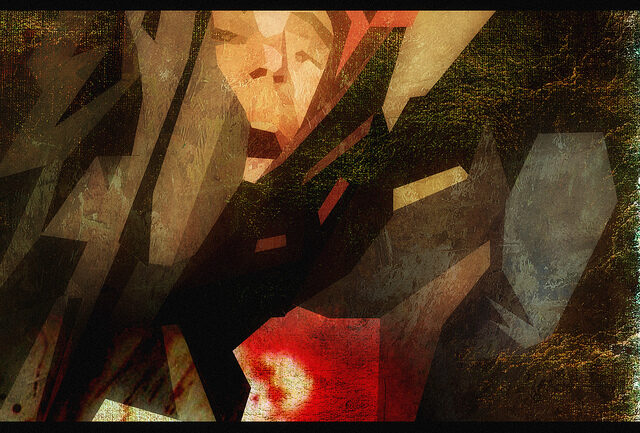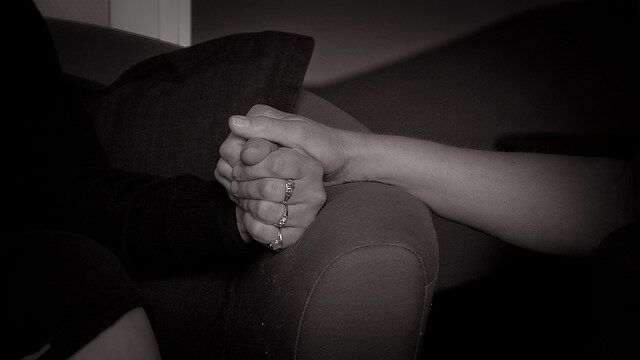Childhood Trauma Can Relate to Addiction in the Future
Sean M. Swaby
Ask a soldier about her trauma, then ask a surgeon. And when I ask you, how will you answer? “What I have experienced is nothing compared with what soldiers or doctors face?”
Look at your friends and family, eight out of ten have experienced at least one trauma before they were 18. Childhood traumas are at the core of many addictions, compulsive behaviors and mental illnesses.
“When we can’t get away, we can still get away… in our heads, by shutting down our awareness.”
Dr. John Briere
If you want a little more of the science behind Trauma, Suffering and Mindfulness see this brief YouTube video by Dr. John Briere. In the video, Dr. Briere discusses how trauma is experienced by the body. He frames how addiction is often the body’s way of distracting itself from painful memories and the only way that it has to regulate our emotion.
Addiction serves a purpose in our lives: it helps us to cope with and avoid painful memories.
Childhood Trauma and Addiction
The ACE (Adverse Childhood Experiences) study found that trauma is pervasive. In fact, it is easier to ask who hasn’t been traumatized than who has. The numbers tell us that 2/3 of adults have experienced at least one trauma, and some studies have that number as high as 80%. Trauma is defined as abuse (physical, emotional or sexual), neglect (physically or emotionally), family dysfunction (family violence, addiction or mental illness for either parent), parents in jail, or parents experiencing separation or divorce.
Trauma is no respecter of persons. Just being present while someone else is harmed can harm you.
The National Survey of Adolescents found that one in four teenagers have experienced at least one traumatic event prior to turning sixteen. By the time they are seventeen, 13% will have full blown PTSD (Post Traumatic Stress Disorder). Teens who experienced sexual or physical assault (or abuse) were three times more likely to use substances than the general population.
Numbers are boring as hell, but they tell a story. The story is that we cannot ignore our pain. If we don’t listen to our pain, it seeps out and we try to numb with cocaine or alcohol, or we suppress it and begin to suffer from depression, or we work ourselves so hard so we don’t have time to stop and think.
Stop and think or you will stop and drink
Chances are, if you have an addiction, your closet is filled with adverse experiences that begin in childhood and stretch into your adult life. And the likelihood that you have witnessed or been a part of violence is two to three times higher than the general population.
The ACE study found that the type and intensity of trauma we experience in the first eighteen years can set the stage for the rest of our lives. Trauma makes you and I more prone to health issues, addiction and mental illness. Click here if you are interested in learning more about ACE and getting your own score.
My Psychiatrist completed the test with me. I have five ACE incidents. When I heard my number, the bells went off for me. I try to eat healthy and exercise, but for most of my life I have struggled with behavioral addiction (just to name a few of my better addictions: binge eating, exercise addiction, compulsive use of technology) and mental illness.

Trauma and Your Health
As an adult, if we find ourselves overreacting to stressors in our life with a heightened stress response – an argument with our spouse, a bill we weren’t expecting, a car that swerves in front of us on the highway – our inflammatory response stays on high, and this leads to physical disease and neuroinflammation, and mental health disorders. Mental and physical health disorders are a result of both the toxic stress response that developed in childhood, intertwined with our behavior — how we react to the adversity around us now — and together this becomes embeded deep into our biology.
Donna Jackson Nakazawa
Trauma is what psychologists call a Flashbulb event in our lives. Our brains, our bodies and our emotions become captivated by the trauma that we experience or witness.
The old part of the brain, the Limbic system, responds to trauma by setting our alert level. Typically we know of this as the Fight, Flight or Freeze response. Trauma activates one or more of these responses so that we move through life constantly in flight mode, freezing and numbing, or fighting whoever (or whatever) is the next target.
Trauma and Your Brain
The brain becomes accustomed to whatever you do on a regular basis. For example, the more that we avoid and isolate, the more we will use that as a go-to coping strategy. The brain’s reward system will make us feel satisfied whenever we avoid/numb, freeze or explode depending on our most typical response.
Humans thrive on relative calm, structure and predictability. A reasonable level of change, anxiety or chaos can make you and I more resilient. Constant change, anxiety or chaos will set our systems on alert all of the time. The body cannot cope and it looks for something that will help to return to an inner sense of calm, and that means:
• Drugs• Alcohol• Sex
• Shopping
When I was first married, every night I took a book to bed and read until I fell asleep. What I was doing was avoiding talking, discussing our conflicts and intimacy. It felt natural to avoid (flee from) my tension or my upset emotions because I had done that for as long as I can remember. You may do the same thing with drugs or alcohol, television, your cell phone or the Internet.

What can we do about our trauma?
• Pay attention to your body and your emotions. Your body keeps a record of your trauma in the form of memories, physical scars, and pain. Trauma can change how you and I respond to ourselves, other people and our world. We become accustomed to (and unaware of) the patterns of trauma in our lives.
• Review the list of symptoms below and ask yourself if you notice patterns of behaviors in your life that are similar to some (or many) of the behaviors on the list? It is important not to self-diagnose. Seeking professional help is often the most important step in healing.
o Numbing out – feeling numb or wanting to feel numb.
o Zoning out – having the sensation that your mind is separate from your body. This can feel like observing yourself, floating or flying.
o Memory gaps – gaps about a time in your life, or about a specific situation.
o Flashbacks or daydreams about a specific incident; or that pull you away from being present.
o Avoidance of emotionally upsetting or vulnerable relationships. An impulse to withdraw and isolate.
o Mood swings, sadness and depression.
o Sleeplessness
o Startle reflex and anxiety, agitation, muscle tension, racing heart beat, and/or increased arousal. You will respond to physical and emotional stressors both real and perceived. Remember that your body is trying to protect you and anxiety is like a self-protection radar system.
o A change in your relationship with your body. Sudden or increased feelings of self-hate, reluctance to care for yourself, a change in your relationship with food, hoarding food, bingeing or other eating disorders.
o Aches and pains
o For a more complete list, follow this link
• Don’t worry alone. Seek support from a trusted friend, if you have one. If not, calling a local distress line can offer support, or seek a good mental health therapist.
• Speak with your doctor. If your symptoms concern you, talk to your doctor. A good doctor will be in tune with not only your physical symptoms but also your mind and emotions. Medication can support recovery by addressing the physical symptoms. Sometimes, it may be better to use exercise and peer support and other times therapy will be key. A doctor can help guide you through the decisions you need to make and can help with referrals to other treatment professionals.
• Therapy and group experiences can be life giving. It is important to look for therapy and groups that are specifically about trauma. Therapists will list their specialties on their websites. Groups will include the criteria in the description. If you are unsure, calling a local helpline can provide you with resources.
o The right therapy will help you establish safety, then you will move to remembering and mourning, and you will slowly reconnect with yourself and others. Follow this link for more on the phases of trauma treatment.
• Body work. Trauma is a whole body experience and treatment should also be holistic. Your treatment may include massage, music (playing and/or listening), pets, physical movement or dance, art, or walking. Your needs may change through the process, so pay attention to what feels right.
• Make meaning. With the support of a therapist, or once you have some therapy time under your belt you can begin to make sense of your experience. Making art, building, writing your story and then re-writing a preferred story can be vital for your healing.
• Communicate your needs. You may need more alone time, or more time with people. You may be sensitive to touch or you may need reassurance. You may also not know what you need, and that is okay. Your needs will change as you move through your healing. Communication will help your partner, your family and your friends to support you.
• Practice awareness. Being aware of yourself and your surroundings is self-nurturing. You are listening to your body and emotions, giving time for renewal. Some people practice Mindfulness meditation, or music meditation. Meditation can help decrease anxiety and improve your ability to deal with intrusive thoughts and emotions. For more on mindfulness, see resource section at the end of this article.
• Practice self-compassion. Be gentle and patient with yourself. Follow this link for a short, helpful video on self-compassion. Build an array of self-soothing practices that can include comforting music, the use of stones, water and bathing, healthy exercise, journaling and reading, art and hobbies, and time with friends.
Mindfulness Resources
Acestoohigh.com provides in depth discussion of the ACES study along with research and news on the impact the study is having.
Mindfulness resources by Dr. Jim Hopper is full of background information on mindfulness, along with specific exercises that you can try. The site also includes numerous resources and recommended sources for further information.
Trauma-Recovery.ca offers helpful information on meditation and self-care. It contains links to mental health resources in the US and Canada.
One last thing to remember, please Keep it Real
Photos by rabiem22, Surian Soosay and Erik Söderström.

